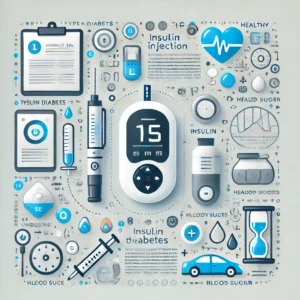Treatments for Type 1 Diabetes
Diabetes has become a continuously developing sickness among people across the world. According to the statics in 2021, approximately 537 million individuals globally were affected with diabetes. There are three types of diabetes. Type 1 diabetes, Type 2 diabetes and Gestational Diabetes. Type 1 diabetes is an autoimmune condition in which the pancreas produces little or no insulin. Since it cannot be cured, managing it effectively is essential for maintaining a healthy life. In this article you will find treatments for type 1 diabetes
Useful Articles: 1. What is Diabetes? Basic Information. 2. Natural Treatment for Diabetes. 3. American Diabetes Association. 4. Signs of Sugar Diabetes
Methods of Treatments for Type 1 Diabetes
Since type 1 diabetes cannot be cured, managing it effectively is essential for maintaining a healthy life.
Here are the available methods for treating Type 1 diabetes.
1. Insulin Therapy
Daily Insulin Injections: People with Type 1 diabetes must take insulin daily to manage blood sugar levels. There are different types of insulin, including:
- Rapid-acting insulin: Works quickly after eating (e.g., Lispro, Aspart).
- Short-acting insulin: Taken before meals (e.g., Regular insulin).
- Intermediate-acting insulin: Controls blood sugar for extended periods (e.g., NPH insulin).
- Long-acting insulin: Provides stable blood sugar control throughout the day (e.g., Glargine, Detemir).
- Insulin Pumps: A device worn on the body that delivers continuous insulin through a catheter under the skin.
Useful Articles: 1. All About Hemorrhoids: Treatment and Prevention. 2. All About Mental Health. 3. Birth Trauma Lawyers Procedures.

2. Continuous Glucose Monitoring (CGM)
CGM devices provide real-time blood sugar readings and trends, allowing for more precise insulin adjustments. Some CGM systems can be paired with insulin pumps for automatic adjustments.
3. Artificial Pancreas System
This advanced technology uses a combination of a continuous glucose monitor and an insulin pump. It mimics the function of a healthy pancreas by automatically adjusting insulin doses based on blood sugar levels.
4. Healthy Diet and Meal Planning
A balanced diet with attention to carbohydrate intake is essential for managing blood sugar. The goal is to balance insulin administration with carbohydrate consumption. Meal planning with consistent carb intake can help maintain stable blood sugar levels.
5. Exercise and Physical Activity
Regular physical activity helps improve insulin sensitivity and lower blood sugar levels. However, people with Type 1 diabetes must monitor their blood sugar before, during, and after exercise to avoid hypoglycemia (low blood sugar).
6. Blood Sugar Monitoring
Frequent monitoring of blood sugar levels is necessary to adjust insulin doses and maintain healthy levels. Self-monitoring involves testing blood sugar using a glucometer multiple times a day.
7. Pancreas Transplantation

In some cases, a pancreas transplant may be considered. After a successful transplant, the patient may no longer need insulin. However, transplants come with risks, including lifelong immunosuppressive drugs to prevent organ rejection.
8. Islet Cell Transplantation
This experimental procedure involves transplanting healthy insulin-producing islet cells from a donor into the pancreas of a person with Type 1 diabetes. It has shown some success but is not widely available.
9. Education and Support
Diabetes education programs teach people how to manage their condition effectively, including how to administer insulin, monitor blood sugar, and handle high or low blood sugar episodes.
Support from healthcare providers, family, or diabetes support groups is vital for emotional and practical support in managing Type 1 diabetes.
While insulin therapy is central to Type 1 diabetes treatment, integrating healthy lifestyle choices, regular monitoring, and new technologies can help improve quality of life.
Conclusion
Managing Type 1 diabetes requires a comprehensive approach, primarily involving insulin therapy to regulate blood sugar levels.
Advanced technologies like insulin pumps and continuous glucose monitoring help improve accuracy in treatment.
Alongside medical treatments, a healthy diet and regular exercise are key components in maintaining stable blood sugar levels.
For some individuals, innovative treatments like pancreas transplants or islet cell transplants may offer new possibilities.
With consistent monitoring and care, individuals with Type 1 diabetes can lead a healthy and active life.
